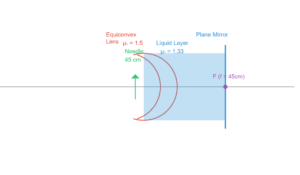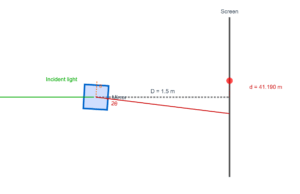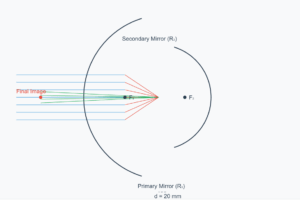Convex Mirror Physics Simulation
Interactive demonstration of convex mirror optics - always forms virtual, erect, and diminished images
Interactive Controls
Real-time Physics Calculations
Object Distance (u):
-12.0 cm
Image Distance (v):
6.7 cm
Magnification (m):
0.556
Image Height (h₂):
2.5 cm
Image Nature:
Virtual
Image Orientation:
Erect
Physics Formulas & Key Concepts
Mirror Formula: 1/f = 1/v + 1/u
Magnification: m = -v/u = h₂/h₁
Convex Mirror Property: Always forms virtual images
Image Characteristics: Virtual, Erect, Diminished
Sign Convention: u < 0, v > 0, f > 0 for convex
Distance Rule: Farther object → smaller image
How Convex Mirrors Work
Always Virtual Images
Convex mirrors always produce virtual images that cannot be projected on a screen. The diverging rays appear to come from behind the mirror when extended backward.
Always Erect & Diminished
The virtual images formed are always upright (erect) and smaller (diminished) than the original object, regardless of the object's position.
Wide Field of View
As objects move farther away, the image becomes progressively smaller and closer to the focal point, providing a wide field of view - useful in car mirrors.



